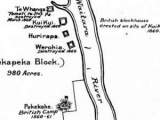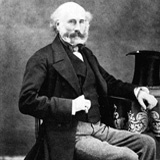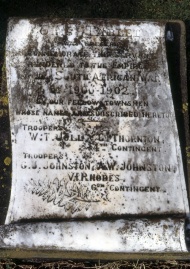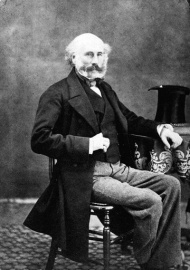Events In History
-
 17 March 1860First Taranaki War erupts at Waitara
17 March 1860First Taranaki War erupts at WaitaraThe opening shots of the first Taranaki War were fired when British troops attacked a pā built by the Te Āti Awa chief Te Rangitāke at Te Kohia, Waitara. Read more...
 Wiremu Te Rangitake
Wiremu Te Rangitake
Te Ati Awa leader Wiremu Kīngi Te Rangitāke's refusal to give up his land at Waitara led to the outbreak of the Taranaki War. In later life joined the pacifist community at Parihaka.
Read more... Donald McLean
Donald McLean
Politician and land purchase agent Donald McLean's approach to race relations was based on the belief that European dominance was inevitable and desirable, and that the best chance for Māori was complete assimilation.
Read more...16 km north-east of New Plymouth. Waitara has been settled for hundreds of years. Some of the earthworks of the extensive early pā, Manukorihi, survive still in the grounds of Manukorihi Intermediate School on the bluff overlooking the town. British troops used the Waitara River for access in 1860, when a dispute over the purchase of the Pekapeka block (west Waitara) led to the first Taranaki war. The military camp established on what is now Pukekohe domain became the centre of operations in the Waitara area during the war. Originally known as Raleigh, the township was established in 1867. In 1904 it was renamed Waitara after the river. For most of the 20th century Waitara’s economy was based on the large Borthwick’s freezing works, which opened in 1885.











